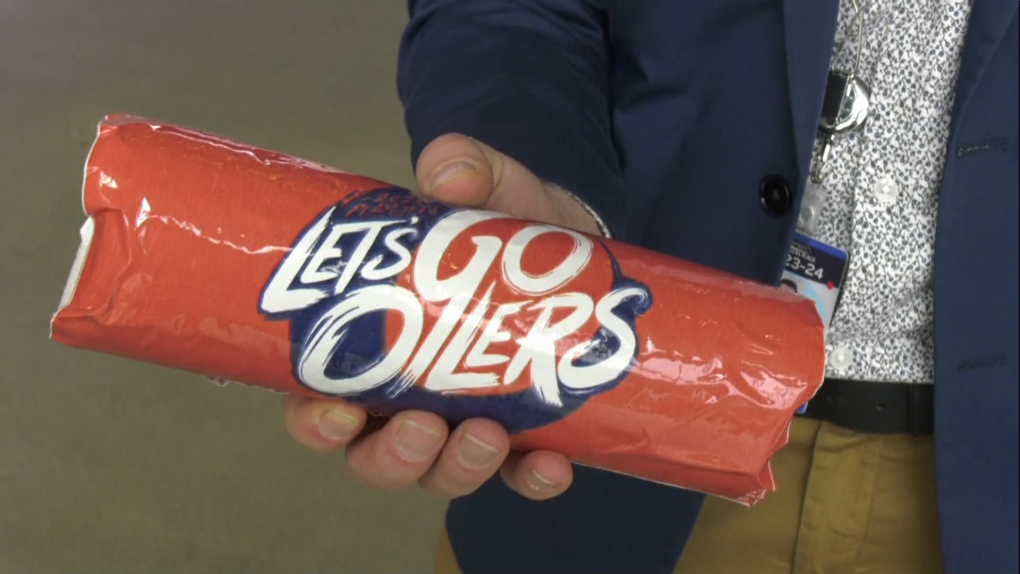The Current12:52The psychology behind the tip screen
For many Canadians, picking up your morning coffee now comes with the swivel of an iPad and a list of tip options that can start at 18 or 20 per cent — but perhaps no option to not tip at all.
One expert says that approach to design — and those preset amounts — can be designed to play on a customer’s desire to appear generous, and nudge them into tipping more.
“People will wait in line, they know they’re being pressured, there’s like 20 people waiting behind them,” said Olivier St-Cyr, an associate professor at the Faculty of Information at the University of Toronto, who studies user-experience design.
“You don’t want to look cheap and you don’t want to also take like six or seven extra steps in order to customize the tipping amount,” he told The Current’s Matt Galloway.
“So you just go with one of the pre-selected options.”
If you’re confused about when to tip and how much these days, you’re not alone. CBC’s Ellen Mauro explains what’s behind tip creep and how to navigate the eye-popping percentages the next time you’re handed a debit machine.
St-Cyr, who is currently a visiting associate professor at the University of British Columbia, spoke to Galloway about the ways technology can influence people’s tipping choices. Here is part of their conversation.
What is the relationship between the design of that technology and how much we tip?
In user-experience design, we study the relationship between people and technology, and there are really two aspects to this. There’s a psychological aspect and a design aspect.
On the psychology aspect, you can see that some [people say] “I feel uncomfortable or I feel like I’m being cheap if I don’t give enough tip.”
There’s an aspect of the social desirability bias that comes into this, we want to be viewed by others as being good or as being socially accepted. So what is the norm in terms of tipping to be socially accepted, to not be seen by either the person who was selling us a good, or the people we go to the restaurant with and we hang around with — if you go with a bunch of friends to not be seen as being cheap.
The Current1:29‘I feel guilted into tipping the higher amount’
This is called the Hawthorne Effect?
It’s social desirability bias, and then it also plays with the Hawthorne Effect, which shows that when we’re being observed, we tend to change our behaviour to be slightly more positive.
If you think about tipping, right, there are really two types of tips. There’s these kind of iPad-looking kiosk or point-of-sale that’s kind of swivelled towards you. And then there’s also the traditional, what we call the portable interactive machine, that your server brings you to your table and then sets it up and asks you to put your card in to pay.
But in both contexts, you’re being observed quite a bit. I mean, sometimes when the person brings the portable machine to your table, they’ll step, you know, a few feet away from your table. They’ll turn their back, just to let you figure out how much tip you want to give. So you can kind of have a little bit of privacy. But I mean, typically the person is really close to you still.
But in the case of these kind of iPad-looking machines … the person is literally in front of you. So of course, you’re kind of being pressured and you feel observed by the person. You feel that the person is actually looking at you, like deciding how much tip you’re going to give.

There’s a design part to that as well. I mean, you talked about this issue of dark design. And just briefly, tell us what that means.
Design is the second aspect, the whole aspect of are you trying to trick people, or purposely get people to pick something on a user interface. This comes to how the information is displayed on the user interface.
In dark design, there’s this concept of preselection … the user is presented with some default options that have already been selected for them. And it’s kind of difficult to get out or to get away from these default options.
It’s hard to pick your own number that you want to tip on because the numbers are there in front of you.
That’s right, and it’s essentially influencing their decision making.
If you give three options, for example, let’s say 8 per cent, 10 per cent and 15 per cent, people will normally not pick the first option because it looks like you’re being the cheapest…. So people will pick the second or the third option.
But now you just shift the numbers, right? Like the first option becomes 15 per cent and the second option becomes 18 per cent and the third option becomes 22 per cent. People will still pick the second or the third option because, again, it’s like the first option is being seen as being the sort of the cheapest option and the not so good option to pick, even though it’s quite a considerable number sometimes.
Some restaurants are doing away with tipping to combat ‘tip fatigue’ amongst cash-strapped customers, opting to adjust menu prices and boost servers’ wages instead.
Part of this is around the whole culture of tipping. And there has been the argument that people’s wages are being supplemented by tipping, and what we would really do, you could eliminate tipping, pay people more — that way you wouldn’t have this sort of thing. But as it exists right now, people talk about tip creep — do you worry that this could backfire?
I think if people don’t give an option for either no tip or customizing the tip on the display, it could essentially, for sure backfire against them.
If you read Google comments for some restaurants, there’s some people that are starting to complain that some places are asking for too much tip. And some owners have responded very nicely, they say, “We now include a more customized option or no tipping option,” but it’s all about how they set up the machine and how that information is displayed.








More Stories
Ingenuity Mars Helicopter down but definitely not out | CBC Radio
These are the countries where TikTok is already banned
Hubble Space Telescope marks 34 years with new portrait of a ‘cosmic dumbbell’